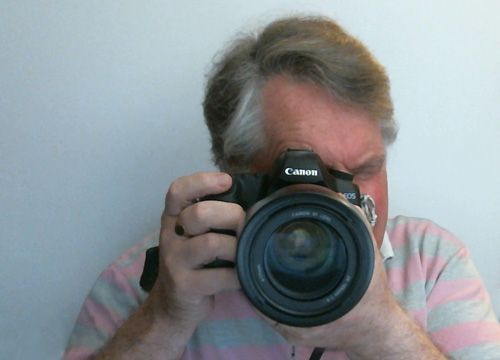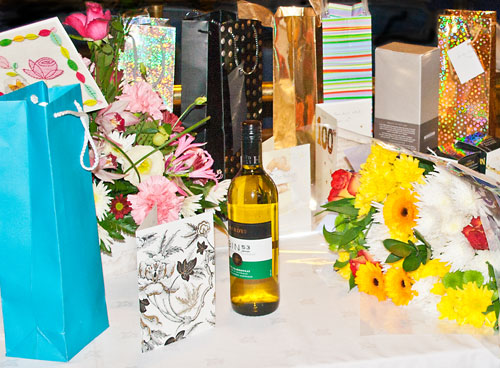
• You and your camera •
Don’t let your hobby take over your life or put you under undue pressure.
Don’t feel guilty saying no to “photography-for-free”.
Keen photogs will probably be asked to take photos for friends. OK. Don’t be shy. The odd shot is fun. It’s about being friendly. What about when that ‘ask’ is really a ‘job’? Here are the ten reasons you need to think carefully before committing to a job without pay…
1. What is a job?
There’s no clear definition. The line between amateur and professional is blurred. Making good or great images is not the only factor involved. Being a professional photographer involves a whole lot more. A keen amateur can produce great images. But can they do it under the same pressure that professionals work under? This is the key to the issue. When you agree to do a “pictures-for-free-gig” you are doing what a professional will do – and not getting paid for it. Can you perform to professional requirements and provide the goods despite the pressure and no pay?
2. When it does not come out right who is at fault?
You! The person who agreed to do this is you. And, the responsibility is yours to deliver. Can you – deliver? You had better be clear about that; and happy to provide a comeback when it fails. Professionals carry professional indemnity to cover serious disasters and legal proceedings. Do you have cover? Have you thought about the consequences for something priceless – your friendship? A possible law suite and loss of friendship can both be devastating.
3. Unforeseen problems
Your friends have asked you to do a job. Do you know what problems are likely to crop up? They probably do not… and they rely on your expertise. You might be happy to produce the shots but do you really know what else is needed? Jumping in blind can be a minefield. What are the expected shots for this type of shoot? Do you even know to ask that question? Do you know what you will need to do to get that information? If you have not worked out what is needed to cover eventualities when problems arise you are in a difficult situation. If you do not see the problems it will be your fault. Are you sure you have covered everything? Think again. And again. For you it’s about photos. For your friends it is about their memories. You really need to be sure you know it all and what will happen.
4. Your time will not be respected…
Your “friends” will expect you to be on call. You may be happy with that. But you have your life to live too, right? Nevertheless, you are doing the job and you will need to be the one who covers the time. Some events have a lot of meeting time and provision for professional input. Do you have that time? Rehearsals, shoot lists, requirements and principle characters are all important and as the photographer you may have to meet them all. You may be required to meet people both during working hours and at evenings and weekends. You may be involved in planning for months ahead of the event. You will need to be ready to fall in line. If you are not being called to these meetings then you are potentially building up a legacy of problems for the day. When you don’t know the details of the event minute by minute but are required to get all the shots, who is at fault? Your time is important to the event. Or at least that is the way it will be seen by the event organisers. Can you really provide that resource? For free?
5. Professional standards
Sure, you will be told, “We don’t expect professional standards”. Your friends have seen your images. They know you are good. Will they feel so forgiving when you do not produce one hundred top quality images with all the expected and formal variations for their wedding, party, engagement, event etc.? One or two good ones from a shoot is great. For your personal interest it may be what you want. When you are working for someone else their expectations are more exacting. Professional standards are expected for all the shots, not just a few. Be ready to provide for that.
6. Things do go wrong!
You are the ONE! The person for the job. Do you have the eventualities covered? Here are some of the sort of things photographers might encounter…
- You drop and break your camera on the day;
- Your memory card is defective;
- You get sick;
- On the day you discover you are not allowed to use flash in church;
- You break a lens;
- Your daughter breaks an arm the day before the event;
- You’re asked on the spot for shots you’ve not agreed or were not prepared to do;
- A passing pedestrian steals your camera bag
 ;
; - A drunk guest wants to take “up front pictures” while you are doing the formal shots;
- Extreme sunlight outside the church will blow out the white on the brides dress;
A professional photographer will have contingencies, strategies and cover for things like these. Things always go wrong in some respect. You need to cover for all these and be prepared for more. And, you need to do it for free.
7. People don’t value things that come free
It is almost a cliché – “the best things in life are the most expensive”. It may not be true. But it is a public perception. If you are doing this “job” for free there can be consequences. Your advice will be devalued because you are free. You will be on the same advice level as Aunt Mavis, the brides father and others. Worse, the chap down the road who is a retired photographer and family friend (who has never used a digital camera) will also be advising out of your earshot. Working in those conditions adds a pressure that is a new dimension beyond friendship (and professionalism). Be aware that doing the job – even if you get it right – may still damage your friendship.
8. Post production
A professional photographer provides an after-shoot service. Within a week the processed images are provided as contact-sheet choices for final prints. There may be a need for a book; a cd; other types of mounted images. Be prepared for about four or five days processing work. Then you will need to provide for the future requirements. You will need to be ready to send out images, keep copies available for updates and reprints for several months. You will also need to retain the images on file indefinitely (securely). You will need to make solid editorial decisions about which images you allow to be seen and which you do not. You may have a thousand images… common for amateur digital photographers. Post production is a big part of a professional shoot. Can you resource it? Can you make the grade in post production? Can you resist when your friends says she wants all the images, not just the ones you chose? Feel good about that?
9. One for free… many more to go
Once people know you do professional work – without the cost – you will be in the front line. All sorts of pressures and unreasonable requests will be made. You will be taken for granted. And, it will be up to you to resource it. Travel, printing, expenses, processing, insurance, time, new equipment – there is more to shooting regularly than simply turning up with your camera. You have to provide resources too. Remember, you will not have the benefit of income for it either. How do you say no to other friends and family when you have done a professional job once already?
10. Photography is fun – right?
Doing the free stuff is fun when you are doing it for you. There is a completely different spin on it when you are doing something under pressure for someone else and not getting anything but hassle in return. Professionals enjoy their job. They are prepared and resourced for the problems and pressures. You need to have the same resources and cope with those pressures too – free. Where is the fun in that? Taking a photography “job” for free takes the fun out of your work. And, it is no fun being taken for granted.
The overview
Despite the opinion of many people, photography is a job. There are professional standards, costs, requirements and pressures. You may want to take up professional photography. That’s fine. However, be prepared. I have pointed out the professional dimensions.
The key point is simple. There are additional pressures on you and your friendships when you let yourself be taken for granted by doing free work. Sometimes they go beyond professional pressure.
Feel free to do family shots, fun activities and enjoyable photography. Even a little charity work and some contributions to local groups are fine – on your terms. Be prepared for something that looks like a “job”. A polite withdrawal will be looked on with respect and friendship once you explain the pressures involved. Failing to make the grade will not be looked on with simple forgiveness.
Comments, additions, amendments or ideas on this article? Contact Us
or why not leave a comment at the bottom of the page…
Like this article? Don’t miss the next — sign up for tips by email.
Photokonnexion Photographic Glossary – Definitions and articles.
Being a professional photographer involves a whole lot more
A passing pedestrian steals your camera bag
We would love to have your articles or tips posted on our site.
Find out more…
Write for Photokonnexion.




